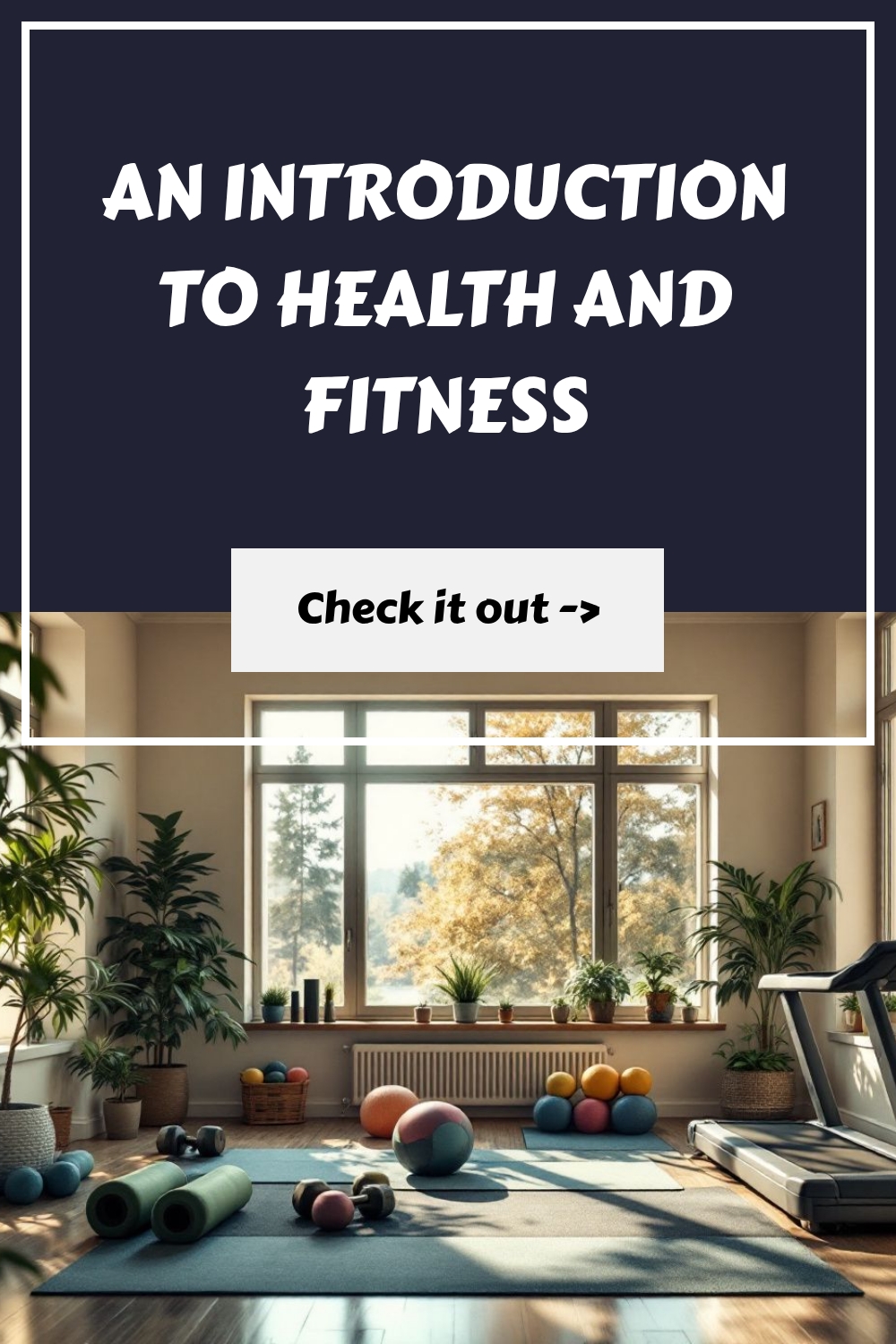Having good health and fitness are goals that many of us strive for. Finding time and money for a gym membership can be hard. Many of us want to get fit but can’t find a way that fits our busy lives and tight budgets. Good news: there’s a solution to good health and fitness right in your home.
Home fitness is growing fast in the United States, making it easier than ever to stay healthy without leaving your house.
This guide will show you how home workouts can lead to good good health and fitness. While saving time, cut costs, and let you exercise in privacy. You’ll learn about essential equipment like treadmills, dumbbells, and yoga mats—tools that make strength training and aerobic exercises doable at home.
Plus, we’ll share tips on creating an effective workout routine that keeps you motivated. Ready? Let’s start this journey to fitness from the comfort of your home.
Key Takeaways
- Home workouts save time and money and are key in achieving good health and fitness. Home gyms and workouts let you exercise when it fits your schedule without gym fees.
- Essential gear like treadmills, dumbbells, and yoga mats helps make a variety of exercises possible at home.
- Mixing cardio, strength training, and flexibility exercises in a routine keeps fitness fun and effective.
- Using the right form and setting up a safe workout space are key to avoiding injuries during home workouts.
- Taking rest days is important for muscle recovery and overall health when doing home fitness.
SHOP NOW ZAZZLE - CLICK BELOW
Home Workouts to Achieve Health and Fitness
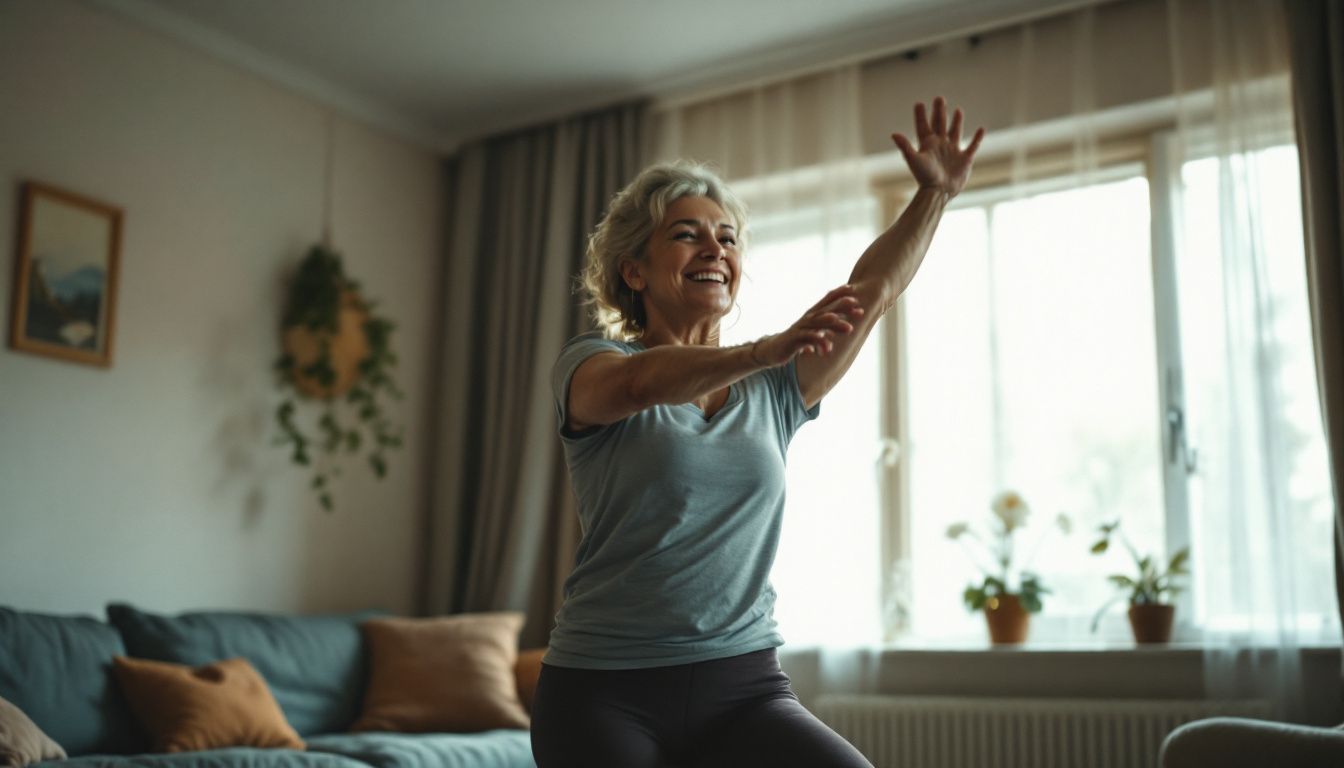
Working out at home saves you time and money. It also lets you exercise in private, feel more comfortable and thus satisfying your goals in health and fitness.
Time efficiency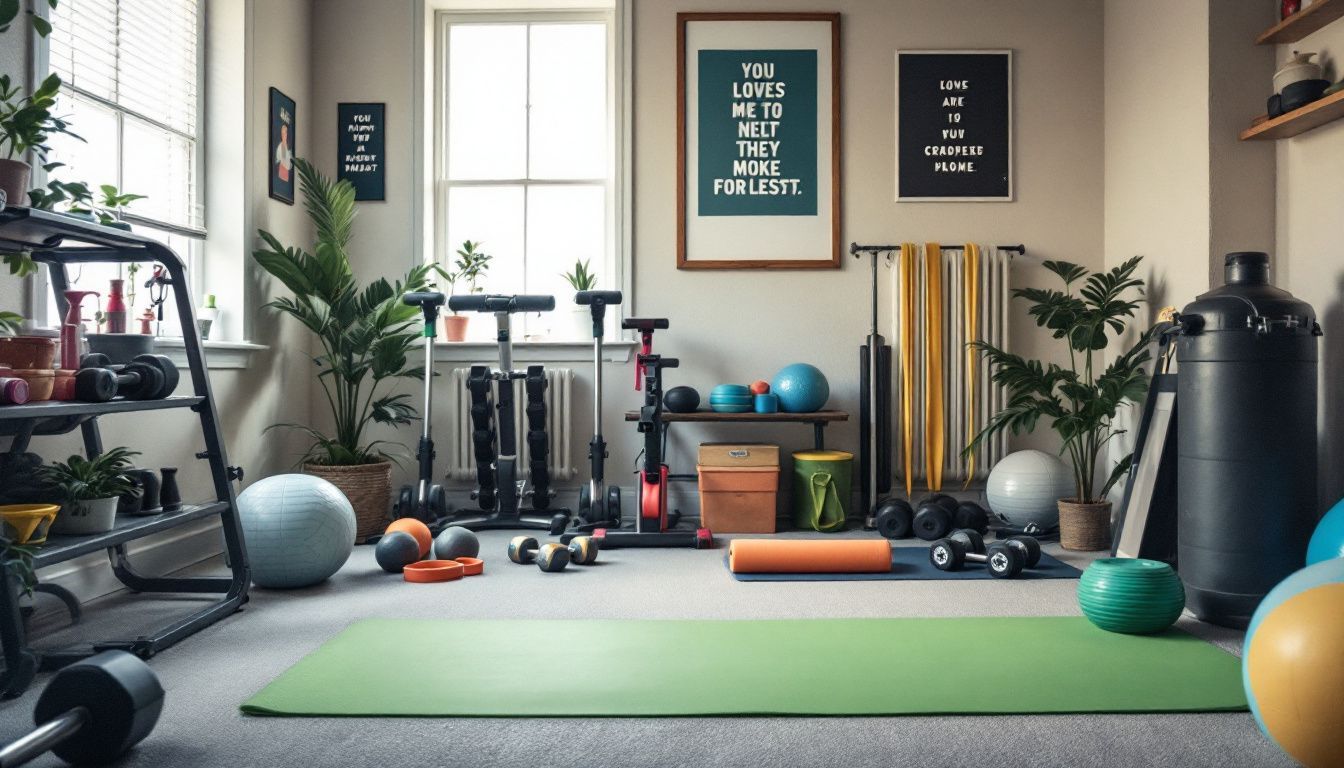
Time efficiency is key in staying fit at home. Many people love working out at their own pace without spending time traveling to a fitness center. This saves hours every week, making it easier to stick with a routine.
Home gyms let you exercise whenever you want. You can do jumping jacks or pushups between meetings or run on the treadmill while watching your favorite show. It’s all about using time wisely.
The best thing about home workouts is not having to wait for equipment or travel far. It fits into my schedule perfectly.
Cost-effectiveness
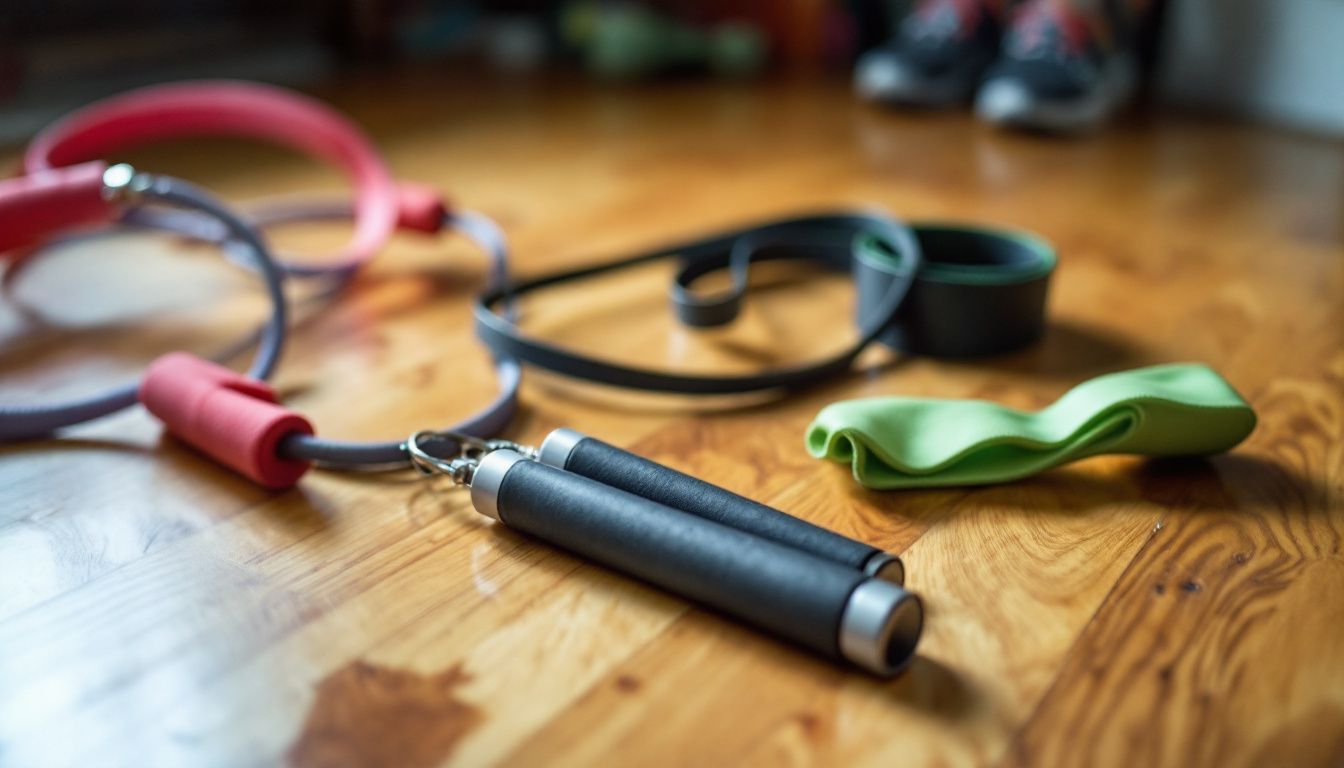
Working out at home saves money. Think about it. No gym fees or expensive classes. You also save on gas, since you don’t drive to the gym. Plus, buying your equipment might seem pricey at first glance but compare that to monthly gym memberships over a year or more.
Suddenly, it’s not so bad, not a struggle to achieve a good level of health and fitness.
Home fitness tech changes have made training cheaper too. Imagine using an app instead of paying for a personal trainer every time you work out. And those cardio machines? A one-time buy serves you for years, unlike signing up for indoor cycling sessions repeatedly.
You can start small—jump ropes and resistance bands are affordable and add a lot to your workouts without breaking the bank. This way, you get all the physical activity benefits without spending much money at all.
Privacy and comfort
Having a home gym means you can exercise without worries. You don’t have to think about others watching you. This makes it easier to focus on your workout. You can do squats, side planks, or use a stability ball in peace.
Your living room turns into a space where mistakes are okay.
In your own space, comfort is key and your goals in health and fitness become a breeze. Wear what you want—no need for fancy gym clothes. If the room is warm, turn on a fan. Cold? Keep the windows closed. Personal comfort helps you stay motivated and happy while exercising at home.
Nutrition is fundamental to health and fitness
Nutrition is fundamental to health and fitness, supporting everything from daily wellbeing to optimizing athletic performance. The core principles focus on three interconnected areas: macronutrient balance, hydration, and timing of food intake.
Key Principles of Nutrition for Health and Fitness
Balanced Macronutrients:
Carbohydrates: Main fuel for moderate to intense activity. Choose whole grains, fruits, and vegetables for sustained energy, especially before workouts.
Protein: Essential for muscle repair, growth, and recovery. A general guideline is 0.6–0.9 grams per pound of body weight daily, spread across meals.
Fats: Vital for hormone health, joint mobility, and prolonged, lower intensity exercise. Prioritize unsaturated fats from plants and oily fish over saturated sources.
Hydration:
Water is the best choice before, during, and after physical activity. Dehydration as low as 2% of body weight can reduce energy and cognition.
Electrolyte Balance: After long or intense activity, replenish minerals with foods like fruits, leafy greens, nuts, seeds, and dairy rather than relying on sugary sports drinks.
Micronutrients and Functional Nutrition:
Iron (especially for women and endurance athletes), vitamin D, and omega-3 fatty acids are crucial for energy, immunity, and muscle function.
Consuming a variety of colorful plant foods delivers antioxidant phytochemicals for faster recovery and long-term health benefits.
Practical Strategies for Exercisers and Athletes
Before Exercise
Eat a meal rich in complex carbs and low in fat and fiber 1–2 hours in advance—try whole-grain toast with fruit, or oatmeal.
For shorter lead-times, choose easily digested foods: bananas, raisins, or diluted fruit juice.
During Exercise
For sessions under 60 minutes: water is sufficient.
For endurance events over an hour, add a source of carbohydrates and electrolytes if needed.
After Exercise
Refuel within 30 to 120 minutes.
Prioritize foods combining protein (e.g., eggs, lean meats, legumes, dairy products) and carbohydrates to replenish muscle glycogen and aid repair.
Continue to hydrate and consider antioxidant-rich foods like cherries, melons, or leafy greens for recovery.
Everyday Tips for Active Lifestyles
Eat a varied diet: Cover all food groups for broad nutrient coverage and to avoid deficiencies.
Listen to your body: Caloric needs increase with training intensity, but overcompensation with processed sports foods can be counterproductive; simple, whole foods are often sufficient for most non-elite exercisers.
Be mindful of marketing: Sports drinks, energy bars, and supplements are often unnecessary and can be high in sugar and saturated fat, especially for children and teens.
Rest and Recovery
Nutrition works best in tandem with adequate sleep (minimum seven hours) and planned recovery days, which are both crucial for long-term fitness progress and health
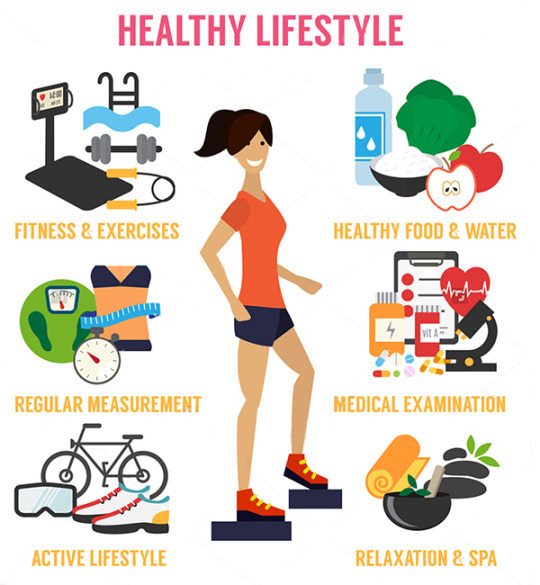
Summary Table: Nutritional Targets for Fitness
| Nutrient | Role | Recommended Sources |
|---|---|---|
| Carbohydrates | Main workout fuel | Whole grains, fruits, vegetables |
| Protein | Muscle repair, hormone health | Lean meats, eggs, dairy, legumes, nuts |
| Fats | Energy (low/mod intensity), joints | Avocado, olive oil, fatty fish, nuts |
| Hydration | Prevent dehydration, supports performance | Water, fruits, vegetables |
| Iron & Vitamin D | Energy, immunity, recovery | Leafy greens (w/vitamin C), oily fish |
| Antioxidants | Recovery, reduced inflammation | Berries, colorful vegetables, cherries |
Every active person benefits from a base diet rich in whole foods, with enough carbs to fuel activity, protein for recovery, and healthy fats for sustained energy. Hydration and micronutrients are just as essential, and trendy sports nutrition products are often unnecessary for most fitness enthusiasts
Key Nutrients for Effective Workout Fueling
Proper nutrition is essential to maximize energy, performance, and recovery during workouts. The following nutrients play the most important roles for both pre- and post-exercise fueling:
Carbohydrates
Role: Provide the primary source of energy for moderate to intense activity. Help delay fatigue by fueling muscles and the brain.
Sources: Whole grains, fruits, starchy vegetables, rice, oats, breads, and pasta.
Protein
Role: Supports muscle repair, growth, and recovery. Essential for rebuilding tissues stressed during workouts.
Sources: Lean meats, poultry, fish, eggs, dairy, legumes, tofu, and nuts.
Fats
Role: Supply energy for lower-intensity and longer-duration activities. Aid in the absorption of fat-soluble vitamins and hormone production.
Sources: Avocados, olive oil, nuts, seeds, fatty fish, and nut butters.
Hydration (Water & Electrolytes)
Role: Maintains fluid balance, temperature regulation, and muscle function. Electrolytes like sodium, potassium, and magnesium help prevent cramps and muscle fatigue.
Sources: Water, fruits (e.g., oranges and bananas), vegetables (e.g., spinach), coconut water, and dairy.
Micronutrients & Functional Nutrients
Iron: Supports oxygen delivery and energy metabolism, especially crucial for women and endurance athletes.
Sources: Lean red meat, beans, lentils, spinach (pair with vitamin C-rich foods for best absorption).
Vitamin D: Supports muscle function and recovery.
Sources: Oily fish, fortified dairy, and sunlight exposure.
Omega-3 Fatty Acids: Reduce inflammation and aid recovery.
Sources: Fatty fish (salmon, sardines), walnuts, chia seeds, flaxseeds.
Antioxidants: Combat exercise-induced oxidative stress and support quicker recovery.
Sources: Berries, cherries, leafy greens, colorful vegetables.
Sample Table: Key Nutrients for Workout Fueling
| Nutrient | Role in Workout | Best Sources |
|---|---|---|
| Carbohydrates | Quick energy, stamina | Whole grains, fruits, starchy veggies |
| Protein | Muscle repair, growth | Lean meats, eggs, dairy, legumes, tofu |
| Fats | Sustained energy | Avocado, nuts, seeds, olive oil, fish |
| Water | Hydration | Water, fruits, vegetables |
| Electrolytes | Fluid/balance/cramps | Bananas (potassium), dairy (calcium), nuts (magnesium), salt (sodium) |
| Iron | Oxygen, endurance | Lean red meat, lentils, spinach |
| Vitamin D | Muscle, immunity | Oily fish, fortified foods, sunlight |
| Omega-3s | Recovery, anti-inflam. | Fatty fish, walnuts, chia, flaxseed |
| Antioxidants | Recovery, resilience | Berries, cherries, leafy greens |
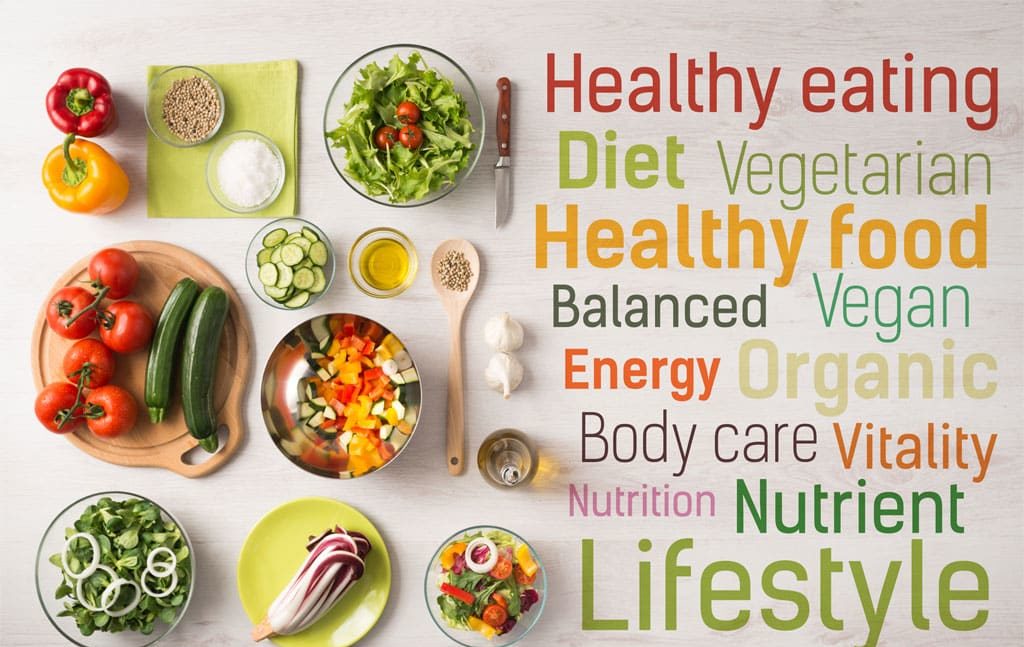
Health and Fitness Nutrition is Key
-
Before Exercise: Focus on carbohydrates and a small amount of protein for energy and endurance.
-
During Exercise: Water is usually sufficient for most; long endurance events may require carbs and electrolytes.
-
After Exercise: Combine protein with carbohydrates to support muscle repair and replenish energy stores.
Balanced nutrition tailored to your fitness intensity and goals ensures optimal performance and recovery.
Essential Home Fitness Equipment
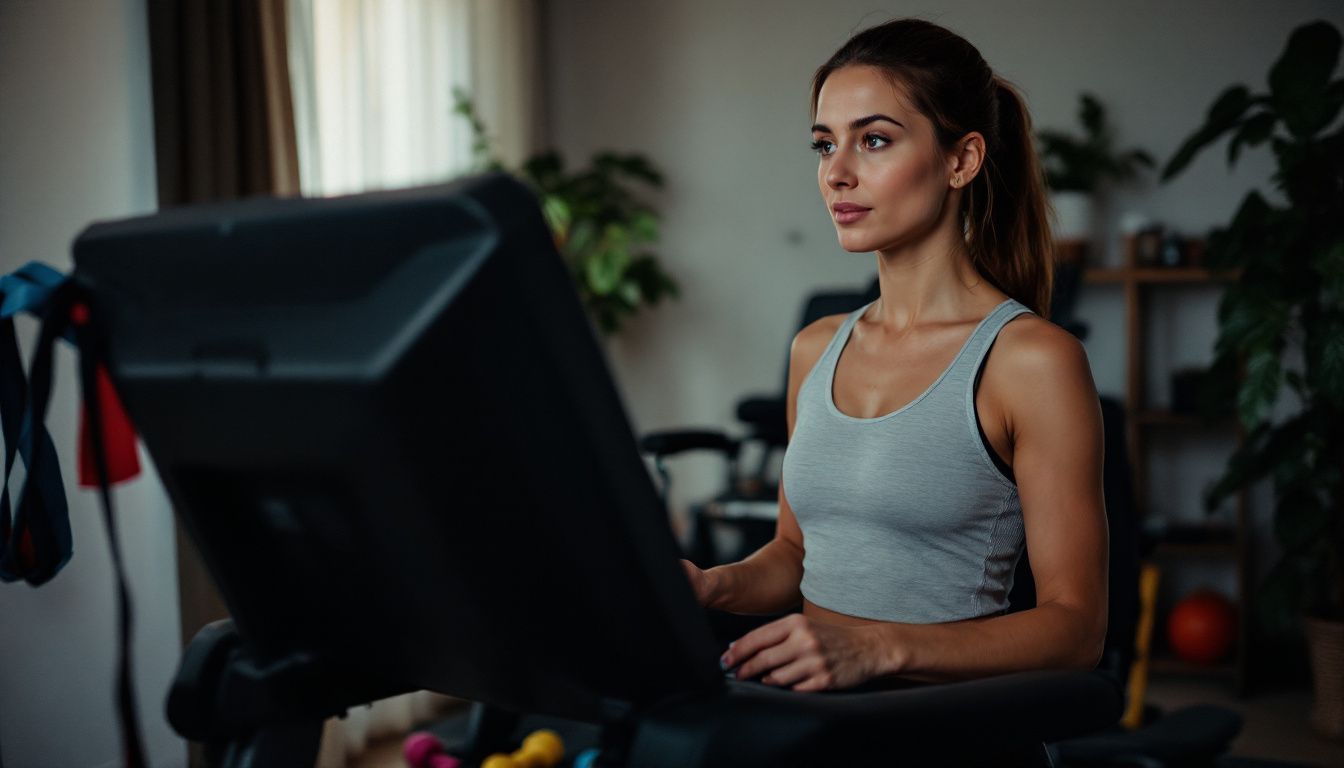
Picking the right gear makes all the difference in home workouts. You’ll need items for cardio, like treadmills or exercise bikes, and tools for strength training, such as hand weights and stretch bands.
Cardio machines (e.g., treadmills, stationary bikes)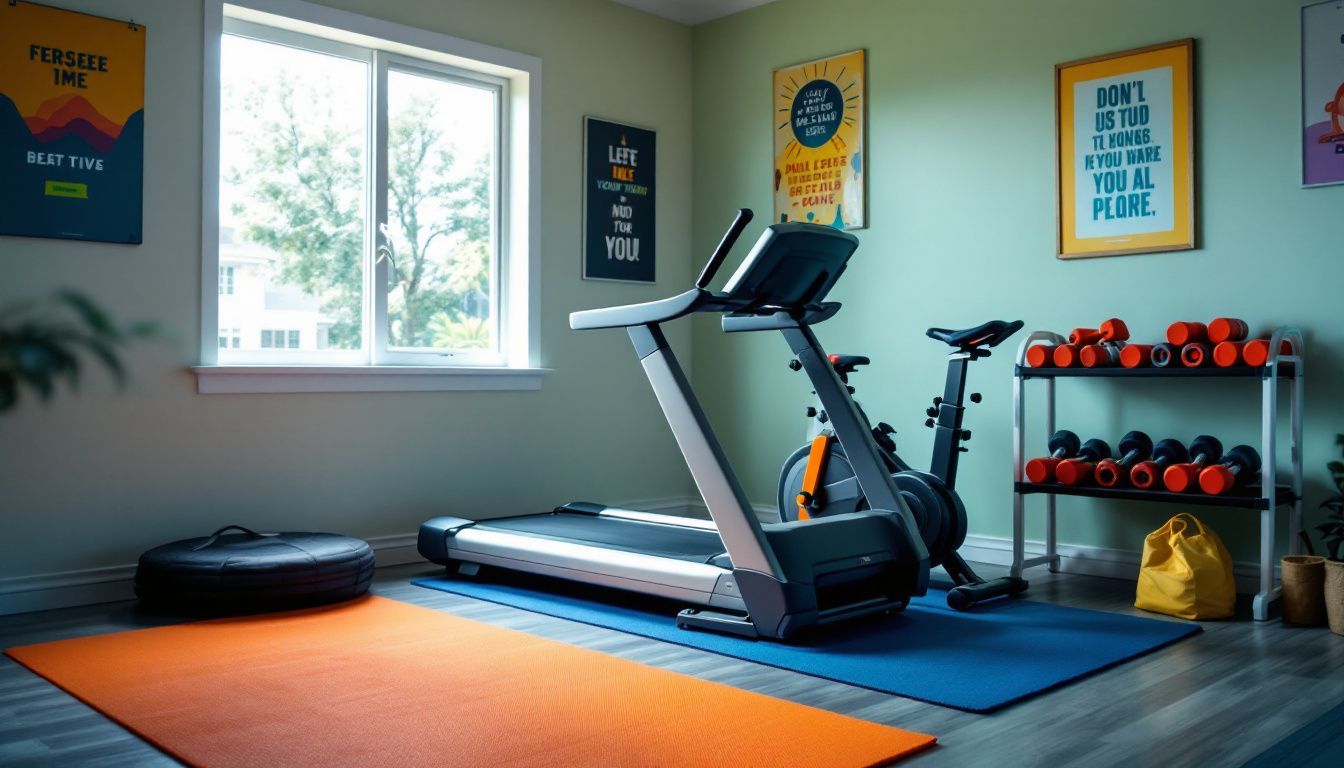
Cardio machines like treadmills and stationary bikes are notably beneficial in home gyms. They prove to be instrumental for weight loss and cardiac health improvement. Their popularity stems from their availability, offering the chance to walk or cycle at any moment regardless of outdoor weather conditions.
These devices also provide progress tracking capabilities with digital monitors that display distance, speed, and calorie expenditure.
Stationary bikes reduce joint stress when compared to running, making them suitable for fitness enthusiasts of all levels. Treadmills offer variety by featuring adjustable speeds and gradients to simulate outdoor running conditions.
Both assist in developing aerobic endurance.
Having a treadmill at home increases the chances of adhering to your fitness regimen.
Elliptical machines and rowing machines are other favored options for cardio equipment. They deliver comprehensive workouts that enhance strength and conditioning without exerting excessive pressure on the feet or lower legs.
Every piece of equipment presents a distinct array of benefits, satisfying various preferences and objectives within cardio exercise.
Strength training tools (e.g., dumbbells, resistance bands)
Dumbbells and resistance bands are key for anyone looking to build muscle at home. These tools help you do compound exercises, like dumbbell rows, deadlifts, and calf raises. With them, you can hit various muscles without needing a lot of space or big machines.
They’re perfect for lifting weights at your own pace.
Resistance bands add to this by offering ways to do pulls-ups, stretch out before workouts, and practice pilates moves. You can adjust the tension for an easier or harder workout. This makes them great for all levels of fitness.
Next up are bodyweight exercise enhancers like yoga mats and stability balls…
Bodyweight exercise enhancers (e.g., yoga mats, stability balls)
Moving on from strength training tools like barbells and resistance bands, let’s talk about items that boost bodyweight workouts. Yoga mats and stability spheres are great examples.
These tools help you do exercises more safely and effectively. For instance, a yoga mat gives you a non-slip surface for push-ups or yoga poses. This means fewer chances of slipping and getting hurt.
Stability spheres make core workouts like crunches tougher but more rewarding. They add an extra challenge by making your muscles work harder to keep balance. This leads to stronger abdominal muscles and better posture over time.
Using these enhancers, along with simple moves like squats, pull-ups, and jumping rope can lead to serious fitness gains right at home.
Designing Your Home Workout Routine
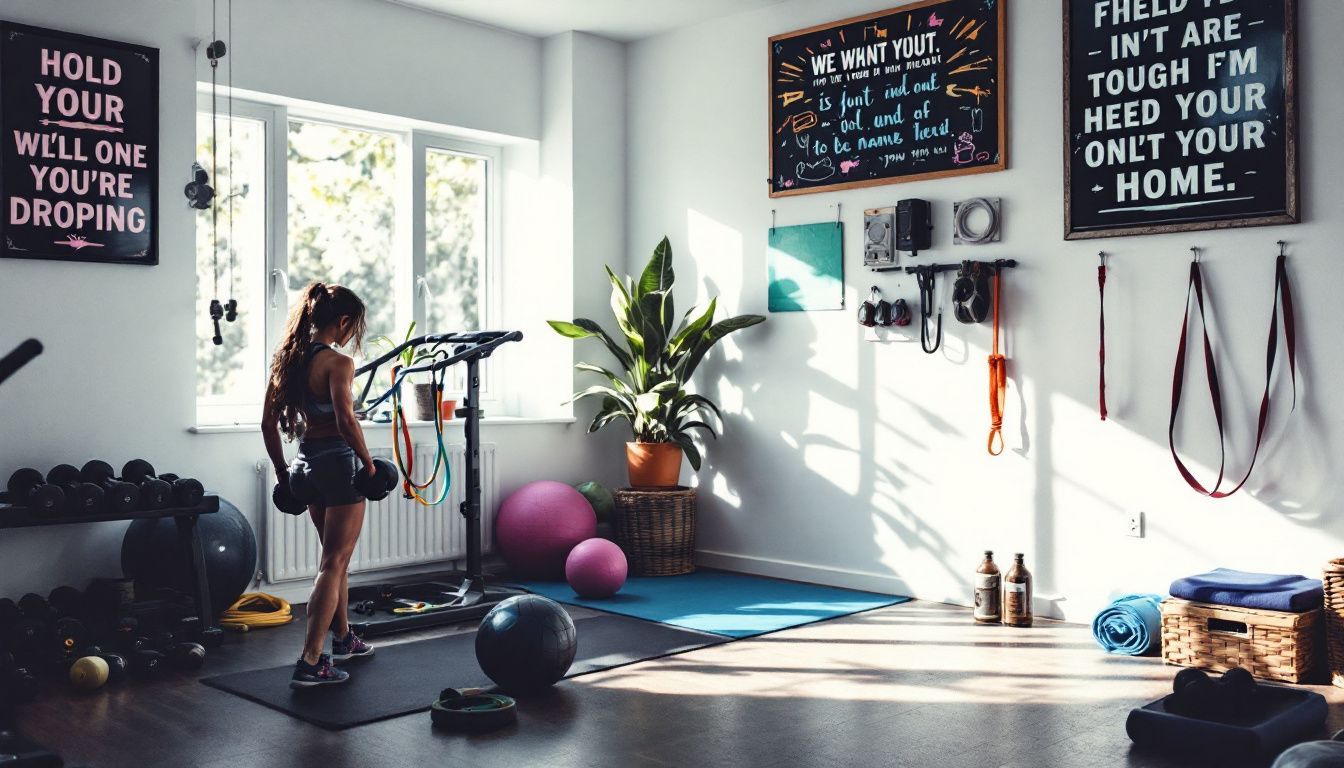
Crafting your home workout plan is key to achieving a good level of health and fitness. Think about mixing different exercises—like cardio, weight lifting, and stretches—to keep things fun and effective. This mix helps you build muscle, burn fat, and improve flexibility all at once! Ready to get moving and create a routine that sticks? Let’s jump into making a plan that fits just right for you.
Creating a balanced routine
A balanced routine mixes cardio, strength training, and flexibility exercises. You might use treadmills or stationary bikes for cardio. For strength, try dumbbells or resistance bands.
Don’t forget yoga mats for stretching. This mix helps your heart, muscles, and joints.
Switch things up to avoid getting bored. Add variety with different tools like punching bags or stability balls. Try new moves to keep challenging your body. This way, you’ll keep improving and won’t hit a plateau.
Set goals to stay motivated. Maybe you want six pack abs or just to lose weight. Keep track of your progress with notes or an app. Celebrate when you reach your goals!
Incorporating variety to prevent plateau
Adding different activities keeps workouts exciting and improvesyour health and fitness results. Mixing cardio, like running or water aerobics, with strength training–think dumbbells and resistance bands–challenges the body.
This mix helps fight off boredom too. Changing up routines stops muscles from getting used to the same exercises. When that happens, growth can stall.
Adding new moves is key as well. Try plyometrics or speed bag punching for something fresh. These changes make muscles work in new ways, which helps keep improving fitness levels. Plus, using a variety of equipment—like swapping a yoga mat for a stability ball—adds fun challenges to workouts.
Keep interests alive by setting new goals too. Maybe aim to master a squat position with perfect form or increase weight training safely over time. Goals like these push you forward and keep exercise interesting day after day.
Tips for maintaining motivation
Adhering to a varied routine will help maintain high levels of motivation and to achieve your goals in health and fitness. Establish distinct objectives for your home workouts. If it’s shedding pounds, fortifying stamina, or simply staying in motion, it’s essential to identify your endpoints.
This allows for easier progress tracking and helps maintain concentration.
Configuring minor, attainable objectives can spike your ambition and sustain your forward momentum.
Take time to acknowledge every achievement during your journey to health and fitness. Have you conquered a challenging workout without capitulating? Have you surpassed a personal record on the treadmill? Treat yourself with something enriching, like a savory smoothie or extended relaxation time.
Making your victories public with loved ones or on social platforms can also elevate your spirit and inspire others.
To conclude, regularly cycling your routines can prevent tedium. Utilize a variety of cardio equipment, experiment with fresh strength training resources like resistance bands as an alternate to weights occasionally, or intersperse bodyweight exercises with yoga mats for diversity.
Modifying your routine aids in avoiding stagnation and reinvigorates enthusiasm in home workouts.
Most Effective Bodyweight Exercises for Health and Fitness at Home
Overview
Bodyweight exercises are ideal for beginners seeking to build strength, improve flexibility, and boost fitness—all without equipment. Here are the most effective, accessible movements recommended by fitness professionals for those starting out.
Essential Beginner Bodyweight Exercises
Upper Body
Wall Push-Up / Knee Push-Up / Standard Push-Up
Targets: Chest, shoulders, triceps, and core.
Progress from wall to knee, then to full push-ups as you gain strength.
Arm Circles
Strengthen shoulders and improve mobility. Stand tall, extend arms to the sides, and make small circles.
Bodyweight Rows (using a sturdy bar or table)
Works the back and biceps. Use an elevated surface for support.
Lower Body
Bodyweight Squats
Powerful for quads, glutes, hamstrings, and calves. Begin with feet hip-width apart, lower as if sitting in a chair, then return to stand.
Chair Squat
Perform the squat with a chair as a guide to master proper technique.
Lunges (Forward, Reverse, Lateral)
Develop balance and work the legs and glutes. Step forward, backward, or sideways into a lunge, lowering yourself while keeping your core tight.
Core
Plank
Strengthens core muscles and improves posture. Hold a straight line from head to heels, starting with 20–30 seconds.
Bridge (Hip Bridge/Glute Bridge)
Targets glutes, hamstrings, and lower back. Lie on your back, feet flat, lift hips until your body forms a straight diagonal line.
Dead Bug
Engages deep core muscles while improving coordination. Extend opposite arm and leg while lying on your back, then switch sides.
Bird Dog
Great for core, lower back, and balance. From all fours, extend one arm and opposite leg, pause, return, and repeat.
Total-Body & Cardio
Jumping Jacks
Simple cardio and warm-up exercise. Jump feet out and raise arms overhead, then return.
High Knees
Run in place, bringing knees toward your chest for added cardio.
Mountain Climbers
Start in a plank position, quickly alternate bringing knees toward chest for cardio and core strength
Example Routine for Beginners
| Exercise | Target Area | Sets | Reps/Time |
|---|---|---|---|
| Wall/Knee Push-Up | Chest/Arms | 2–3 | 8–12 |
| Bodyweight Squat | Legs/Glutes | 2–3 | 10–15 |
| Plank | Core | 2–3 | 20–30 seconds |
| Lunge (each leg) | Legs/Glutes | 2–3 | 10–12 |
| Glute Bridge | Glutes/Core | 2–3 | 10–15 |
| Arm Circles | Shoulders | 2–3 | 10 clockwise/ccw |
| Jumping Jacks | Cardio/Warm-up | 2 | 30 seconds |
Rest 30–60 seconds between sets.
Safety Tips for Home Workouts

Working out at home means keeping things safe to avoid injuries, remember health and fitness is the goal. Making sure you’re doing exercises right and your workout area is clear of dangers can make a big difference.
Proper form and technique
Using the right form and technique during home workouts keeps you safe. It helps you get better results from your exercises. For example, doing pull-ups with good form means you work the right muscles without hurting your back.
If you’re lifting weights or using resistance bands, moving correctly prevents injuries.
To make sure you’re doing exercises right, watch videos by fitness experts. They show how to move safely and effectively. Also, starting with lighter weights lets you focus on form before adding more weight.
This approach ties into progressive overload—a way to increase strength over time by slowly upping what your body can handle.
Using equipment like yoga mats and stability balls also supports proper form in exercises like planks or sit-ups. These tools help improve balance and core strength—key parts of staying fit aerobically and for muscle building at home.
Always warm up before exercising to prepare your body, reducing the chance of injury even further.
Setting up a safe workout space
Creating a secure environment for exercise requires some planning. Starting with, identify an area that’s sufficiently large for your activities. If your workout involves pursuits like rock climbing or the use of plyo boxes, more space will be required.
Ensure the floor is stable and free from items that could trigger slips or falls. Utilizing rubber mats can be beneficial for improved grip and floor preservation.
Furthermore, verify the brightness and air circulation. Proper illumination aids in clear visibility, helping to prevent errors during exercises like pullups or when operators use treadmills.
Refreshing air makes the location comfortable, particularly during rigorous workouts or initial warm-ups.
Maintain an organized setup for apparatus like dumbbells and resistance bands. This improves the appearance of your area and also prevents mishaps. For individuals aiming to lose weight with substantial equipment like weighted vests, having a specified area guarantees safety during their usage.
In the end, always ensure water is easily accessible for hydration and necessary breaks while staying in your exercise area.
Knowing when to rest
After setting up a safe place to exercise, the next step is learning when your body needs a break. Your muscles need time to heal after workouts. This helps you get stronger and avoids injuries and are key to achieving health and fitness.
Listen to what your body tells you. If you feel pain or too tired, it’s time to rest.
Rock climbers and runners know this well. They take breaks to avoid overworking their muscles. Rest days are key in losing weight too because they let your body recover fully. Always include warm-up exercises before starting your routine again.
This keeps you healthy and ready for more workouts.
Conclusion
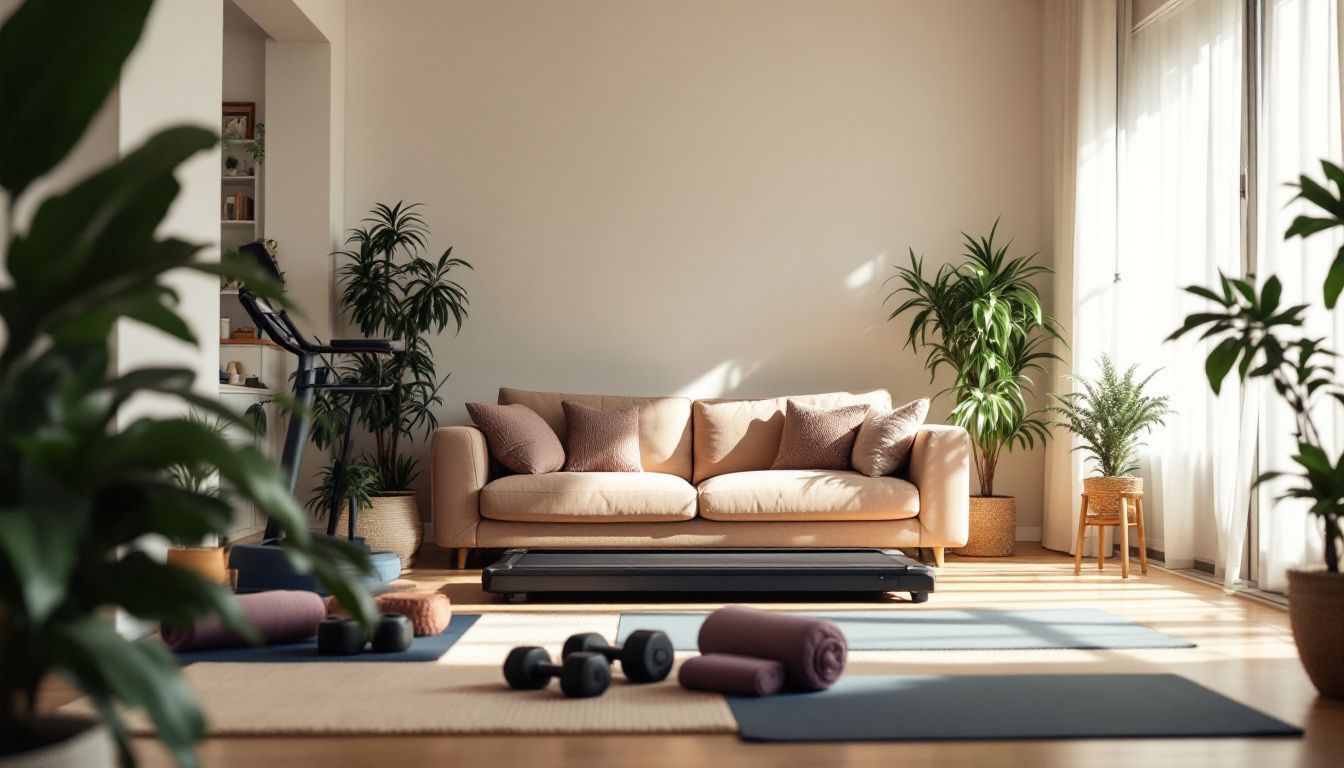
Embarking on home health and fitness reveals a host of advantages. You economize time, funds, and exercise confidentially. Essential equipment such as treadmills, free weights, and yoga mats make this feasible.
A well-tailored workout schedule keeps things engaging and elevates motivation and keeps you on track to health and fitness. It’s crucial to always concentrate on performing exercises correctly for safety. With these measures, you’ll maintain fitness and health at home.
Initiating home workouts is straightforward and sustainable. They facilitate incorporating exercise into your schedule with ease. The result? Substantial health gains without stepping outside your dwelling.
If you need more guidance, don’t hesitate to explore online. Abundant resources are available to assist your progress.
Remember—beginning is the first stride towards a more fit you.
Home fitness is a realm where everyone can find their pace. Why not embark today?
FAQs
1. Why is warming up important in home fitness?
Warming up before any physical activity, including home fitness, prepares your body for the workout ahead. It increases blood flow to muscles and helps prevent injuries.
2. What are some health benefits of regular home fitness?
Regularly exercising at home can provide numerous health benefits such as improved heart health, increased muscle strength, better flexibility and balance, and enhanced mental well-being.
3. How does health and fitness contribute to disease control?
Engaging in regular physical activity like home workouts can help control diseases by reducing risk factors such as high blood pressure and cholesterol levels which are associated with conditions like heart disease or diabetes.
4. Can I start a home fitness regime without any prior experience?
Absolutely! Starting a new exercise routine at home might seem daunting but it’s entirely possible even for beginners… Just remember – always start slow, gradually increase intensity over time, never skip warming up before workouts and cool down afterwards.


 Cart is empty
Cart is empty 






